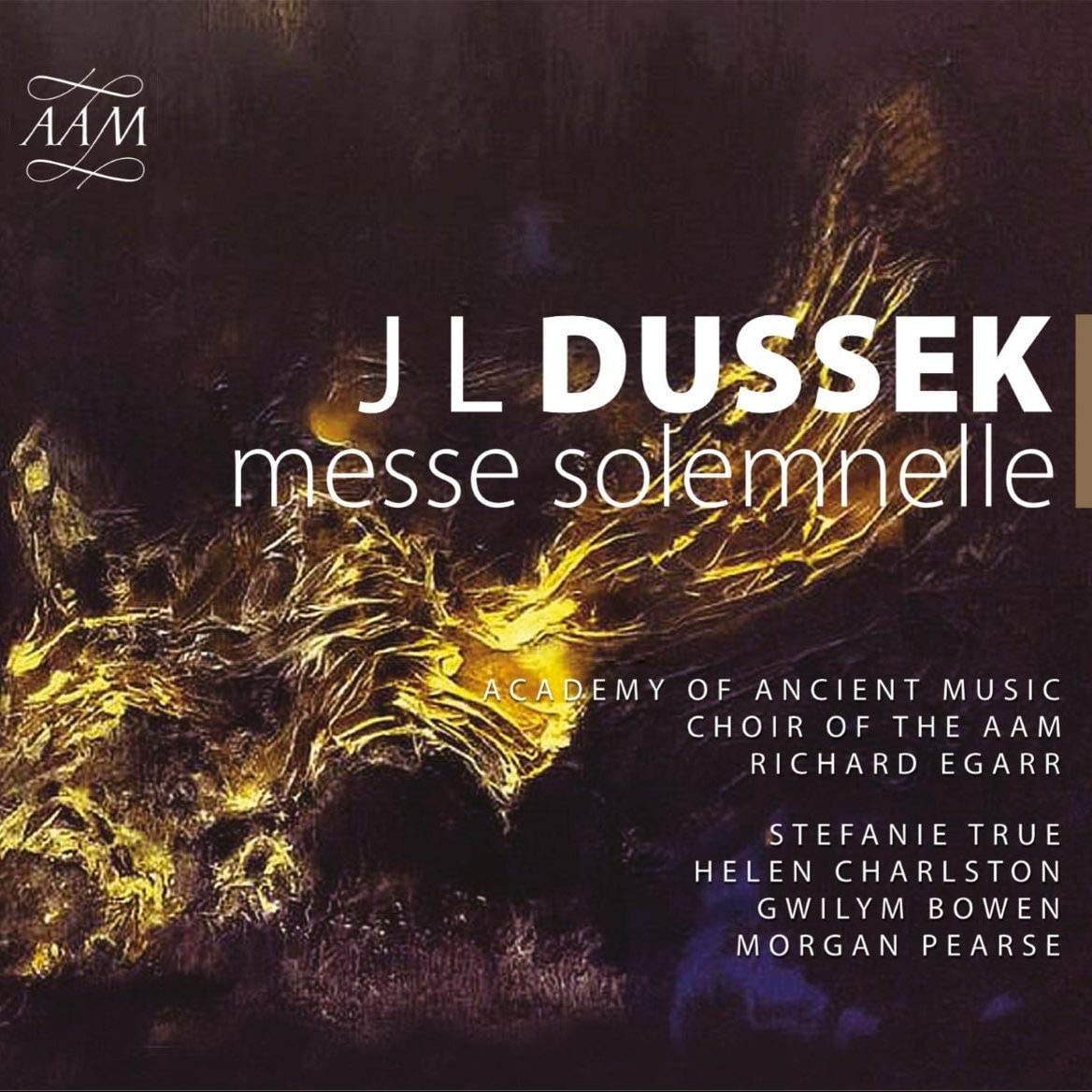Stefanie True soprano, Helen Charlston mezzo-soprano, Gwilym Bowen tenor, Morgan Pearse baritone, Academy of Ancient Music, Choir of the AAM, Richard Egarr
60:14
AAM011
Click HERE to buy this recording on amazon.
[These sponsored links help the site remain alive and FREE!]
That Jan Ladislav Dussek composed a Mass will doubtless come as a surprise to those that think of him nearly exclusively as a composer of piano music, though he did also provide music for a couple of stage works during the period he was in London in the 1790s. And indeed anyone thinking that can be forgiven, for the present ‘Messe Solemnelle à quatre voix’ lay undisturbed in the Library of the Luigi Cherubini Conservatory in Florence for some two hundred years after its first performance in 1810 or 1811. Bearing a dedication to Prince Nicolas Esterházy, it was composed for the nobleman’s name-day celebrations, thus falling into a distinguished series of works that includes the six great late Masses of Haydn and the C-major Mass of Beethoven. It owes its modern revival to the tenacity of the conductor of the present recording, Richard Egarr, who directed the first – and most likely only – public performance since the work’s premiere at Esterháza in London in 2019. The recording took place a few weeks later.
The work is planned on an extensive scale, although the proportions are unusual. The opening Kyrie, divided into the usual three parts, takes nearly 15 minutes in this performance, longer than the entire Credo, while the Agnus Dei is dominated by its final words, ‘Dona nobis pacem’, at first treated with prayerful invocation that turns to strident demands, rather in the manner of Haydn’s Missa in angustiis, the so-called ‘Nelson Mass’ of 1798. It is of course worth remembering that Europe was still in a ‘time of anxiety and affliction’ in 1810. The Mass is largely dominated by the chorus, with passages for the four soloists generally restricted to ensemble work. These often feature imitation, passages such as Benedictus, complimented by felicitous wind writing that betrays the composer’s Czech heritage. Only ‘Et in Spiritum’ is set as a true solo, an arietta for soprano in the shape of a flowing larghetto with warmly rich lower string textures that are something of a feature of the Mass. The opening Kyrie is melodically distinctive, the work as a whole having an engaging, sunny character far removed from the stern, rather old-fashioned Viennese tradition that continued to dominate the church music of Haydn, Mozart and even to some extent Beethoven.
The performance reflects strongly Richard Egarr’s declared devotion to Dussek in general and the Mass in particular, being imbued with a passionate drive in more dramatic passages, which frequently have a thrilling intensity, and real affection in Dussek’s lyrical, at times quasi-folk-like music. He draws splendid playing and commitment from the chorus and orchestra of the AAM, while his soloists blend well, although some will feel soprano Stefanie True displays too much vibrato for this repertoire.
In keeping with the other AAM issue to have come my way (Eccles’ Semele) the presentation is outstanding, with a lavishly illustrated 100-page booklet that includes no fewer than nine scholarly articles in addition to the usual artist biographies and text of the Mass. If I don’t feel able to go all the way with Egarr in his description of the Mass as great music, it is certainly both imposing and companionable. I am delighted to have made its acquaintance and hope others will too.
Brian Robins
